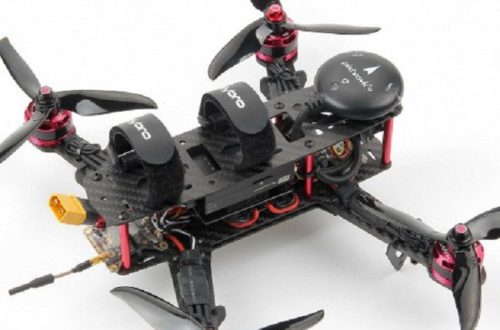Part 1: The Origins of Transformer Robot Toys
Transformer robot toys have been a popular choice for children since the early 20th century. The concept of robots that can change into different forms quickly captured the imagination of kids and adults alike. Makers first fashioned transforming robot toys from metal, and they differed significantly from the plastic ones we see today. Here are a couple of key points about the origins of transforming robot toys.
1. Japanese Influence:
The concept of transformer robots can be traced back to Japan, where the idea of robots transforming into vehicles or animals first appeared in the form of manga and anime. One of the most influential series was “Getter Robo,” which featured robots that could change their forms for different purposes. This concept eventually led to the creation of the first transforming robot toys.

2. The Rise of Metal Toys:
The earliest transformer robot toys were made from metal, such as tin or steel. These toys were built to last and were often quite heavy and durable. Brands like Tomy and Bandai were among the first to produce these metal transforming robot toys, and they quickly gained popularity in Japan and around the world. The intricate designs and mechanical movements of these metal toys made them a favorite among children and collectors alike.
Part 2: The Transition to Plastic
As technology and manufacturing processes evolved, transforming robot toys also underwent significant changes. One of the most significant shifts was the transition from metal to plastic. This transition marked a new era for transforming robot toys, allowing for more intricate designs, smoother movements, and a wider range of colors. Here are a couple of key points about the transition to plastic transforming robot toys.
1. Advancements in Plastic Manufacturing:
The development of new plastic materials and manufacturing techniques allowed toymakers to create more complex and detailed designs for transforming robot toys. Plastic injection molding, in particular, revolutionized the production process, making it easier and more cost-effective to create intricate parts and components. This led to the creation of transforming robot toys with more realistic and dynamic forms, as well as improved articulation and mobility.
2. Enhanced Playability and Safety:
The introduction of plastic transforming robot toys represented a significant shift in the toy industry, providing a safer and more child-friendly alternative to their metal counterparts. The transition to plastic fundamentally transformed the landscape of toy production and consumption, offering a multitude of benefits for children and parents alike.
Plastic toys offered a lightweight and durable option, making them well-suited for children of all ages. Unlike their metal counterparts, plastic transforming robot toys were less likely to cause injury, as they posed a reduced risk of cuts or bruises during play. The relatively lightweight nature of plastic toys allowed for comfortable handling and play, especially for younger children, while also mitigating the risk of accidental injury that could result from heavier and more rigid metal toys. This shift towards plastic thus promoted a safer and more enjoyable play experience for children, instilling a sense of confidence and security for both the young ones and their parents.
Furthermore, the use of non-toxic plastics ensured that these toys met stringent safety standards, providing parents with an added layer of assurance regarding the well-being of their children. Manufacturers placed an emphasis on the use of materials that were free from harmful substances, ensuring that plastic transforming robot toys adhered to strict safety and health regulations. This emphasis on non-toxicity not only safeguarded children from potential health hazards but also consolidated the trust and confidence of parents in the safety of the toys, thereby providing peace of mind as their children engaged in imaginative play.

Part 3: The Impact of Pop Culture
Transformer robot toys have always been closely associated with popular culture, particularly with the rise of iconic characters in television shows, movies, and video games. These pop culture influences have played a significant role in shaping the design and appeal of transforming robot toys over the years. Here are a couple of key points about the impact of pop culture on transforming robot toys.
1. Tie-Ins with TV Shows and Movies:
As transformer robot toys gained popularity, toymakers began to capitalize on the success of popular media franchises by producing licensed toys based on well-known characters and properties. This led to the creation of iconic transforming robot toy lines such as Transformers, which became a global phenomenon thanks to the success of the accompanying animated TV series and comic books. These tie-ins helped to establish transforming robot toys as a staple of popular culture and solidified their status as must-have toys for children everywhere.
2. Technological Integration:
The influence of pop culture has also prompted toymakers to incorporate advanced technological features into transforming robot toys. With the rise of digital entertainment and interactive gaming, transforming robot toys have evolved to include electronic lights, sounds, and even remote-controlled capabilities. This integration of technology has added a new dimension to the play experience, allowing children to interact with their favorite characters in more immersive and engaging ways.
Part 4: The Future of Transforming Robot Toys
As technology continues to advance and consumer preferences evolve, the future of transforming robot toys is looking more exciting than ever. From innovations in materials and manufacturing to the integration of cutting-edge technologies, transforming robot toys are poised to continue capturing the hearts and imaginations of children around the world. Here are a couple of key points about the future of transforming robot toys.

1. Sustainable Materials and Design:
In response to growing concerns about environmental sustainability, toymakers have been actively exploring new and innovative approaches to produce transforming robot toys that are more environmentally friendly. This includes a shift towards the use of sustainable materials, such as bio-based plastics and recycled components, and the adoption of design practices that promote longevity and reusability. In addition, toymakers are also prioritizing eco-friendly packaging solutions, with an emphasis on reducing waste and environmental impact.
Toymakers are employing the adoption of bio-based plastics as one of their key strategies to reduce the environmental impact of transforming robot toys. These bio-based plastics are derived from renewable sources such as corn, sugarcane, or vegetable oils, offering a more sustainable alternative to traditional petroleum-based plastics. By utilizing these materials, toymakers can decrease their reliance on fossil fuels and decrease the carbon footprint associated with toy production.
Furthermore, the integration of recycled materials into the manufacturing process contributes to the mitigation of waste and the conservation of resources. Incorporating recycled plastics or other reclaimed materials not only reduces the demand for new, virgin resources but also diverts valuable materials from landfills, contributing to a more circular and sustainable approach to toy production.
2. Augmented Reality and Virtual Play:
Transforming robot toys will likely closely intertwine with augmented reality (AR) and virtual reality (VR) technologies in the future. Toymakers are already experimenting with AR/VR-enhanced transforming robot toys that can interact with digital environments, providing children with immersive and interactive play experiences. This fusion of physical and digital play has the potential to open up new avenues of creativity and storytelling, as well as foster a deeper connection between children and their favorite transforming robot characters.
In conclusion, the evolution of transforming robot toys from metal to plastic has been driven by the convergence of technological advancements, pop culture influences, and changing consumer expectations. As we look towards the future, it’s clear that transforming robot toys will continue to push boundaries and inspire the next generation of young innovators and storytellers. With their timeless appeal and endless potential for creativity, transforming robot toys are sure to remain a beloved part of childhood play for many years to come.




